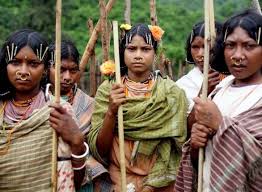Violation of Indigenous rights in wildlife conservation
- ByAdmin --
- 05 Aug 2024 --
- 0 Comments
VIOLATION OF INDIGENOUS RIGHTS IN WILDLIFE CONSERVATION
Two important pieces of Indian law that deal with the rights of indigenous tribes and the conservation of wildlife are the Scheduled Tribes and Other Traditional Forest Dwellers (Recognition of Forest Rights) Act (2006) (FRA) and the Wildlife conservation Act (1972). Even though each law has a distinct purpose, there are certain inconsistencies and difficulties when applying them simultaneously.
The primary objective of the Wildlife Protection Act (1972) in India is to safeguard and preserve wildlife and their natural environments. The act's goal is to protect wildlife, but several of its provisions have sparked worries that they may have unfavorable effects on native tribal populations. Some criticize these clauses, saying they are anti-tribal or harmful to the rights and way of life of indigenous populations.
India passed the Forest Rights Act (FRA) in 2006; it was also known as the Scheduled Tribes and Other Traditional Forest Dwellers (Recognition of Forest Rights) Act. The legislation addressed historical injustices and provided legal procedures for the preservation of the rights and livelihoods of tribal people and other traditional forest inhabitants, with the goal of recognizing and vesting forest rights in them.
Inconsistencies between the two acts:
- The Wildlife Protection Act seeks to stop the trade in endangered animals as well as hunting and poaching. However, the FRA acknowledges the rights of indigenous populations that live near forests, including the ability to access and utilize such resources for traditional customs and subsistence.
- The Wildlife Protection Act's creation of protected areas may clash with the rights of native tribes that the FRA recognizes. Tribal groups are frequently relocated to protected areas, which results in their eviction from their customary lands and the disruption of their means of subsistence.
- Hunting is typically forbidden by the Wildlife Protection Act, with the exception of specific situations and with the required licenses. However, this restriction may contradict with the rights recognized by the FRA for indigenous communities that depend on hunting for their traditional customs and livelihood.
- Inconsistent interpretations, a lack of cooperation between various government entities, and a lack of knowledge about rights among indigenous people are obstacles to the effective application of both acts.
- The basic and customary rights of local and indigenous groups, who have lived in these lands for millennia, are not acknowledged by India's conservation paradigm. The Forest Rights Act (2006) and other regulations that support conservation are frequently broken by the approach. This strategy puts human lives and the environment it was designed to preserve in jeopardy rather than honoring the rights of communities and indigenous people.
Wildlife First v. Ministry of Forests & Environment (2018) 3: The Supreme Court reaffirmed in this judgment the necessity of striking a balance between the rights of populations that live near forests and the preservation of wildlife. The FRA and the WPA must be properly implemented, the court said, in order to prevent disputes and guarantee the preservation of both tribal rights and wildlife areas. - Conclusion:
An all-encompassing strategy that takes into account the rights of indigenous tribes as well as conservation objectives is needed to resolve the conflicts between the WPA and the FRA. The cohabitation of indigenous tribes' rights and the protection of wildlife is a complicated and multifaceted topic. However, a number of tactics and techniques, such as the acknowledgment of indigenous rights, the integration of policies, the sustainable use of resources, etc., can support the development of a positive link between these two goals.




























0 comments